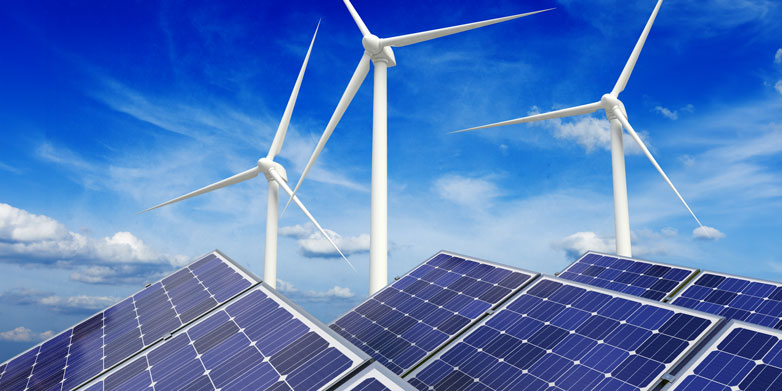User feedback is essential, especially for complex technology
Environmentally friendly, low-carbon energy technologies are needed to achieve global climate targets. Tobias Schmidt’s research examines the interaction between public policy and carbon-reducing innovations in the energy sector. He will present his findings at the world’s largest science conference, the AAAS, in February.

Tobias Schmidt, in your work you investigate the interaction between the energy sector and government policy. What is your focus here?
Tobias Schmidt: The starting point for my research is the climate protection target arising from the Paris Agreement in 2015. Limiting the increase in global average temperature to well below 2 degrees Celsius will require a transformation of our energy supply. Technological innovation and the diffusion of low-carbon technologies is a key lever in achieving this transformation in a cost-effective way. At the same time, because electricity is a key input to production processes, the energy sector forms the foundation for all other economic activities. This is one of many reasons why the energy sector is so highly regulated. Energy policy and technological transformation mutually influence one another. I find that interesting.
The buzzword here is low-carbon energy technologies. Your investigations have particularly focused on solar energy, wind energy, and lithium-ion batteries. Why these three aspects?
Because they are good examples of three types of innovation that are driving the technological transformation in the energy sector. There is no single, typical model of innovation when it comes to environmentally friendly technologies. Whether it is the product or process innovations that are of critical importance depends much more on the individual technology. In previous studies with colleagues at ETH’s Department of Management, Technology and Economics, we showed that photovoltaics are an example of a mass-produced technology and that has progressed largely thanks to innovations in the production process and reduced costs of manufacturing. For wind energy, it is product innovations that are very important. Wind turbines are complex systems where design plays a critical role in their success on the market. And then there are the ‘dually complex’ products, which require innovation in terms of both products and processes for them to progress.
Are lithium-ion batteries an example of these doubly complex products?
Yes. If you change one component inside a lithium-ion battery, you usually have to change other components, and adapt the design and manufacturing process. Our latest research shows that product and process innovations are often hard to separate.
But surely complexity also means that when you change one component, as a part of a greater whole, you don’t always know what else this will change?
Correct, and that is exciting, because it means that a company’s or industry’s experience and its learning culture – ‘learning by doing’ – really come into play. It isn’t possible to predict everything using computer models. Instead, you have to test things and be flexible if something unexpected happens during production or when the user is operating it. As a manufacturer, you have a competitive advantage here if you were quick off the mark and actively involved in shaping early development.
What kind of advantage?
The more complex a product is, the more important it is to the manufacturer that they receive prompt feedback from the user. Pioneering companies receive the initial feedback on their products earlier than others, which allows them to manufacture the next generation of products more quickly. Danish wind energy manufacturers, for example, often have subsidiaries that operate the wind farms. This allows them to gather user feedback to improve their wind turbines.
That is a good example of product innovation. And what sort of process innovations have you observed?
The more complex a process or technology or product is, the more important market growth is to promote further innovation. When a market grows, more is invested in new production facilities, and manufacturers learn faster, and more about their equipment – which increases the likelihood of innovation. If a market stagnates, companies keep producing with existing equipment, and less is learned. Innovation therefore becomes less likely.
What does this mean for energy policy?
Energy policy is ideally based on a technology strategy and is targeted to the part of the value chain where innovation is happening. Alongside other factors, the type of innovation plays a key role here: Do you want to improve product or process capabilities? There are many countries across the world who are combining their emission reduction policies with a technology policy.
What does this mean for Switzerland?
Swiss industry has a competitive advantage if the products and processes are complex and precision work is required. The mechanical engineering sector, for example, manages complexity very well, and this experience is a real benefit in innovative process technologies.
And finally, are the climate protection targets outlined in the Paris Agreement achievable?
It will not be easy to limit the increase in global average temperature to well below 2 degrees Celsius. But I am an optimist. People tend to underestimate the likelihood of innovation and cost reductions. Costs of new technologies are reducing more rapidly than anticipated. For example, photovoltaics are now the cheapest means to produce electricity in some locations. This can generate positive political momentum, such as that seen in Paris.
In what way?
The main mechanism behind the Kyoto Protocol in 1997 was emissions trading, a means of fairly distributing the costs of climate protection. Now, the principle behind the Paris Agreement is based on a mentality of opportunity-seizing and the understanding that money can be made and jobs can be created using environmentally friendly, low-carbon technologies.
About Tobias Schmidt
Tobias Schmidt has been a Tenure-Track Assistant Professor of Energy Politics at ETH Zurich since December 2014. He has in-depth expertise in both the technical and economic fields. Building on his interdisciplinary background, his research focuses on the interrelationships between the energy industry and energy policy. Here he applies both quantitative and qualitative methods from social sciences and engineering.
Tobias Schmidt will be speaking at the world’s largest science conference, the Annual Conference of the external pageAmerican Association for the Advancement of Sciencecall_made (AAAS), on 18 February. The motto of this year’s conference is “Serving Society through Science Policy”.

